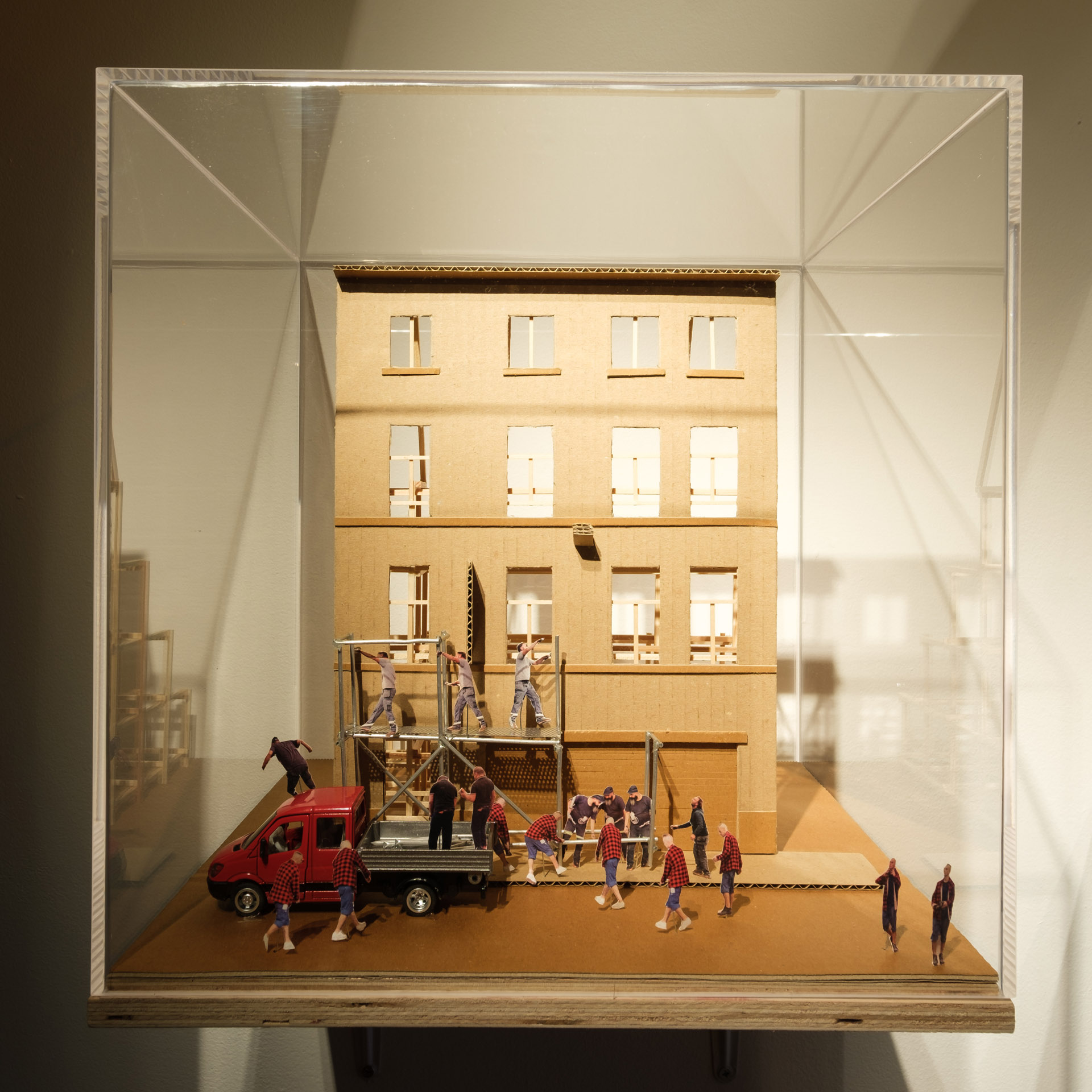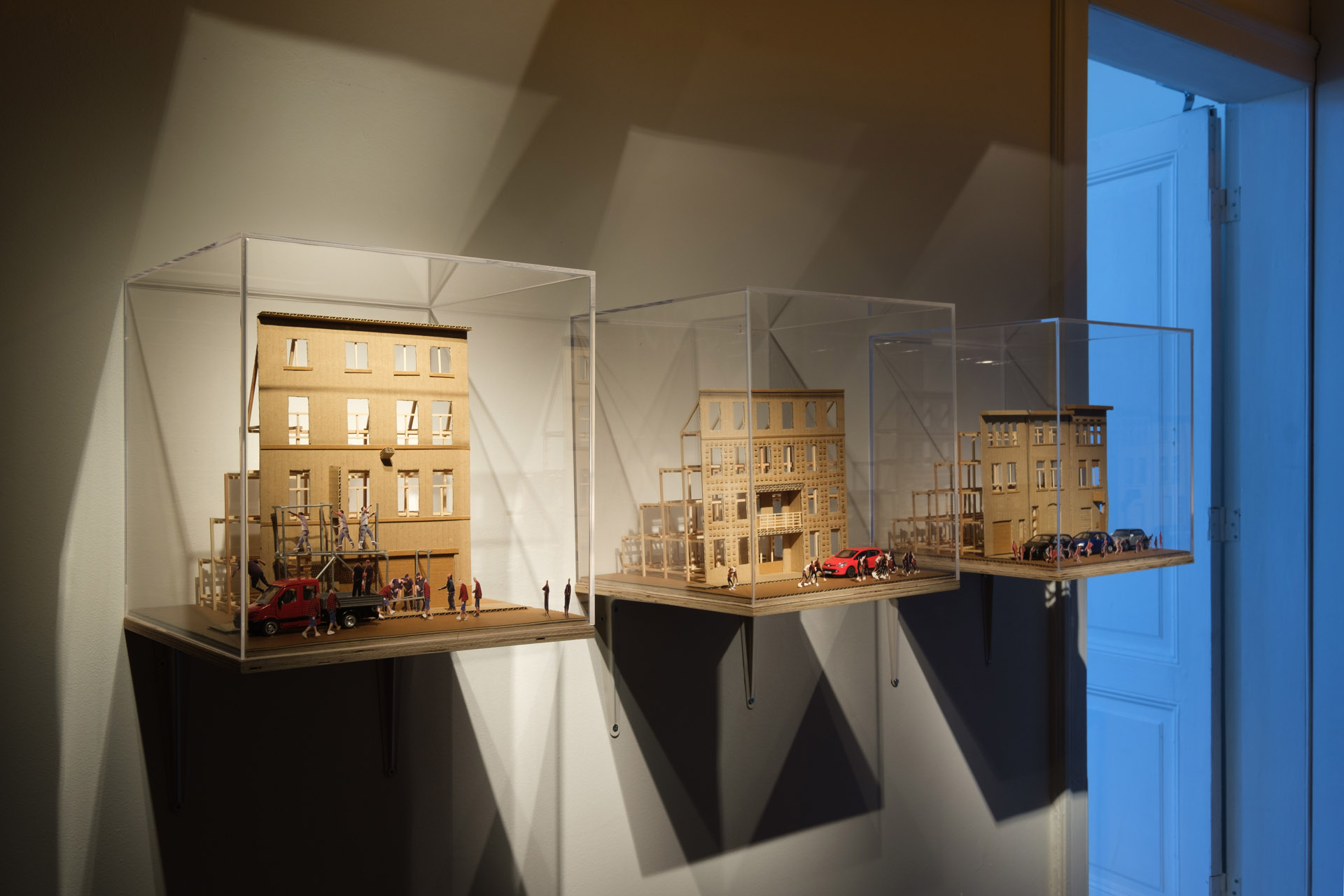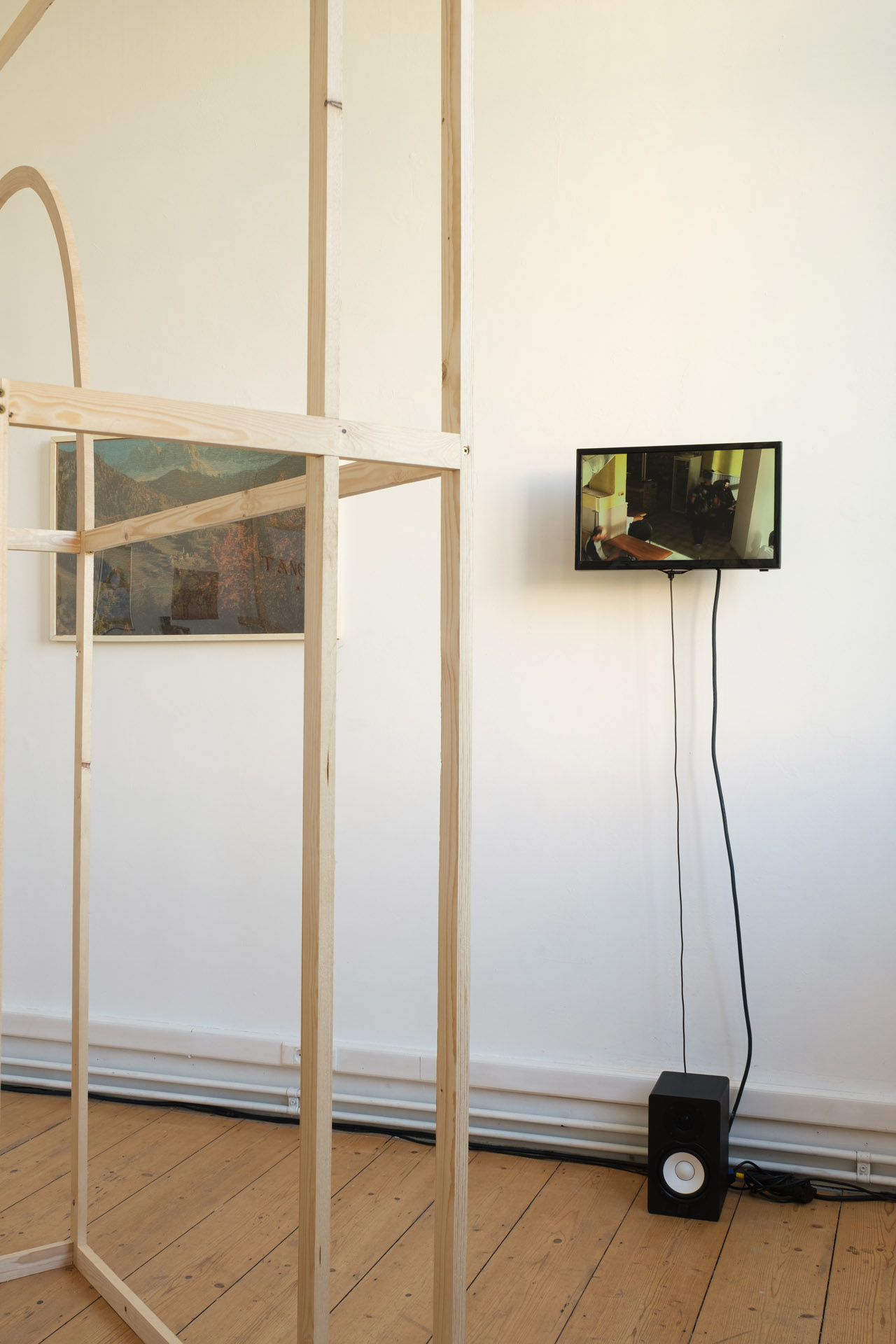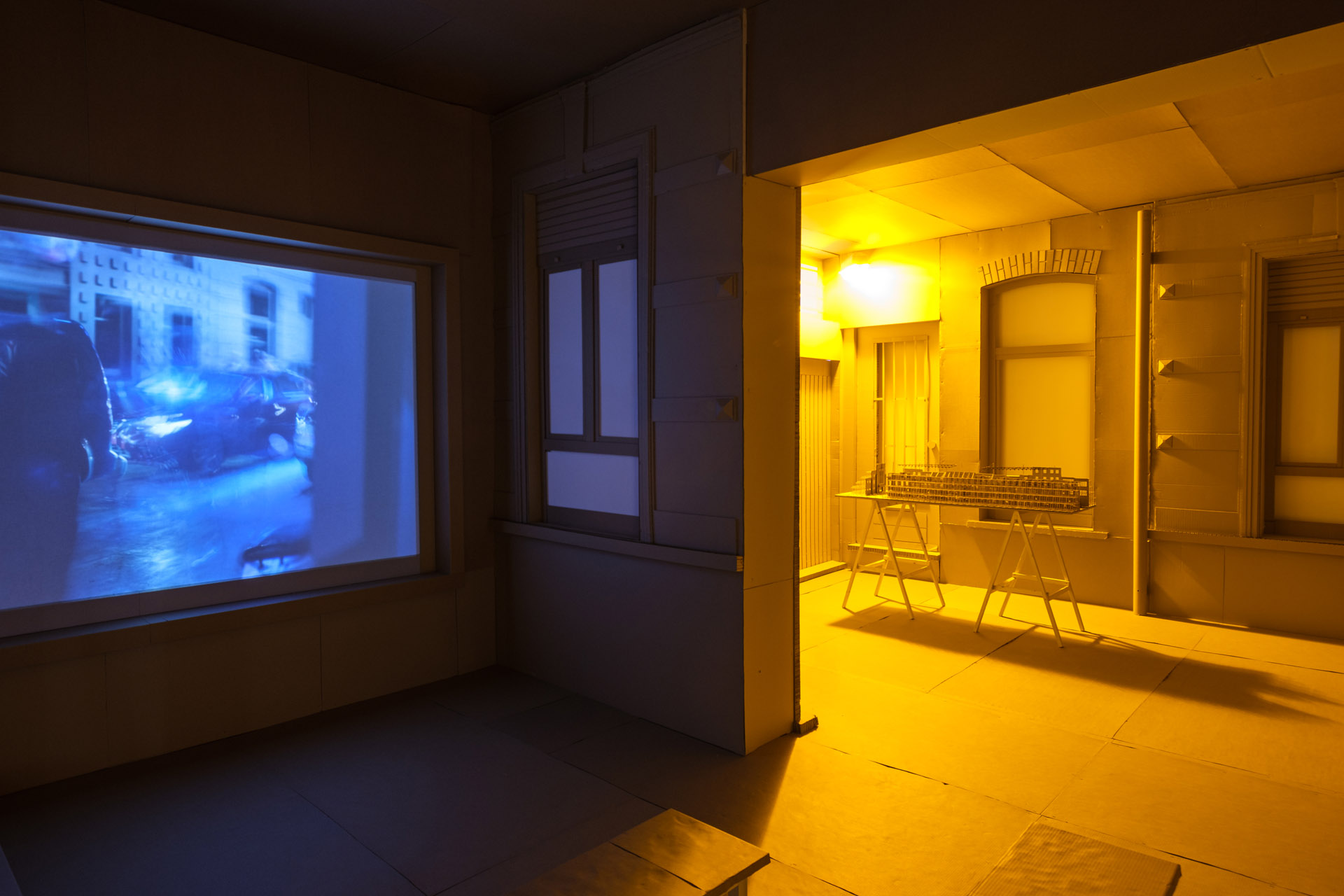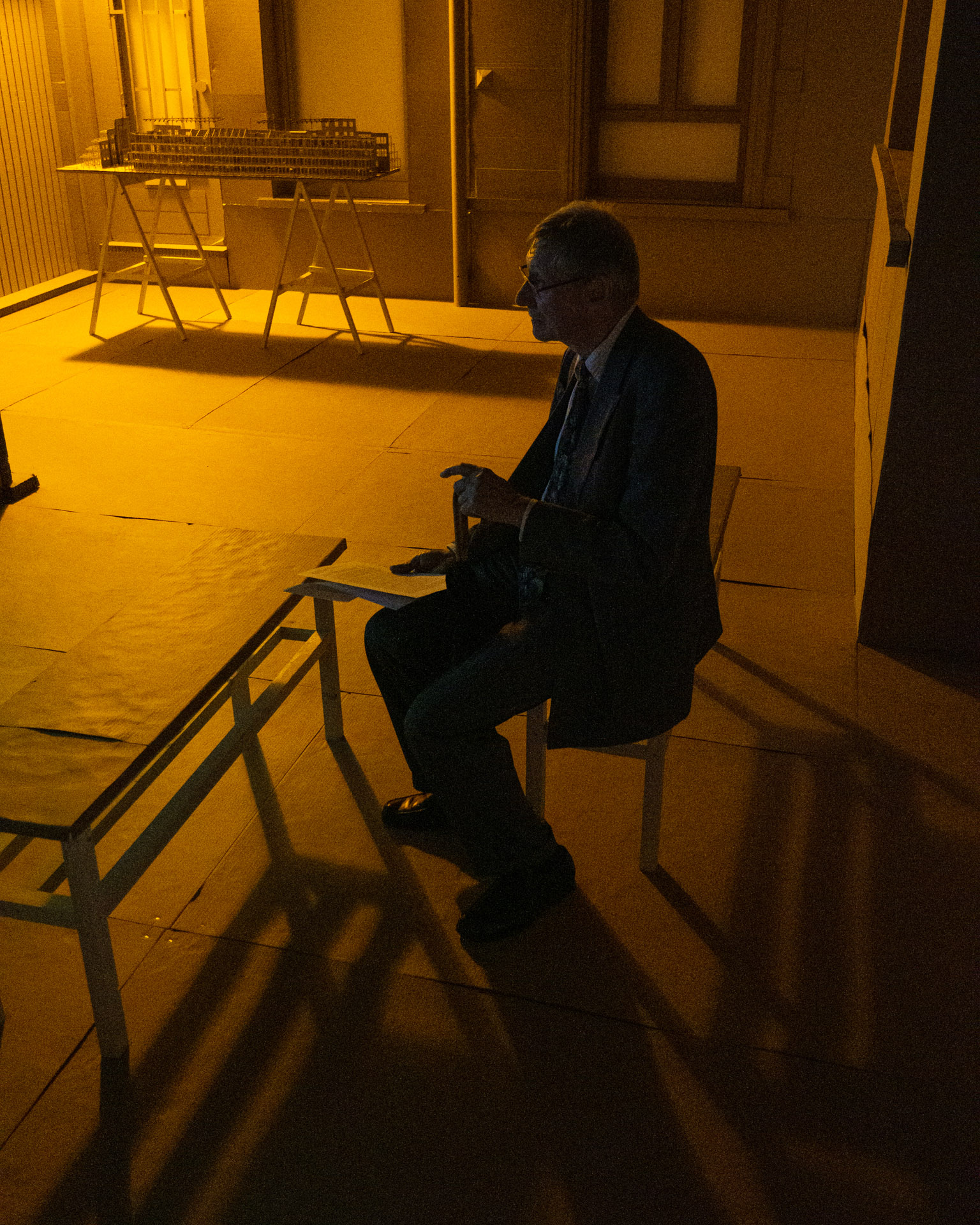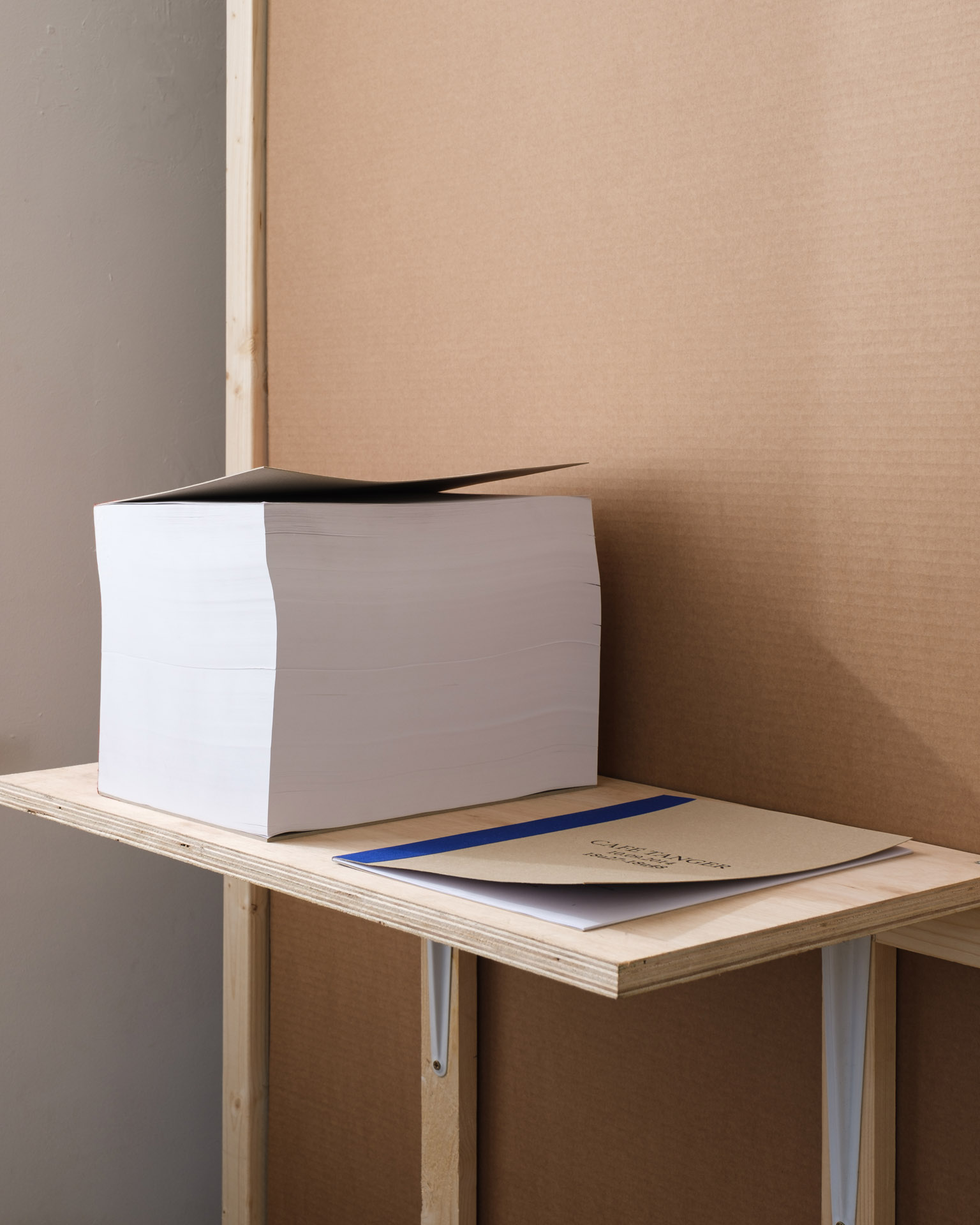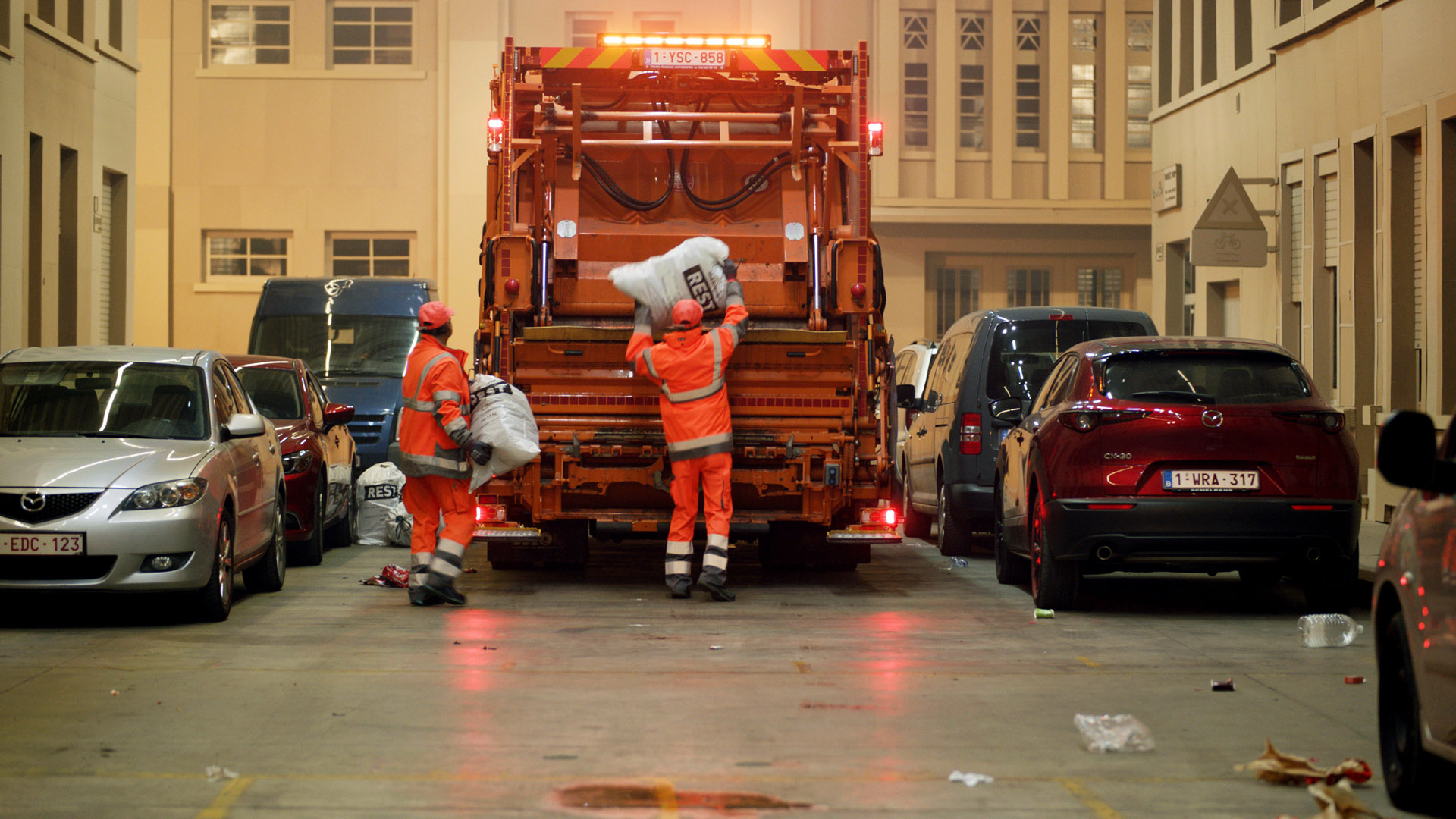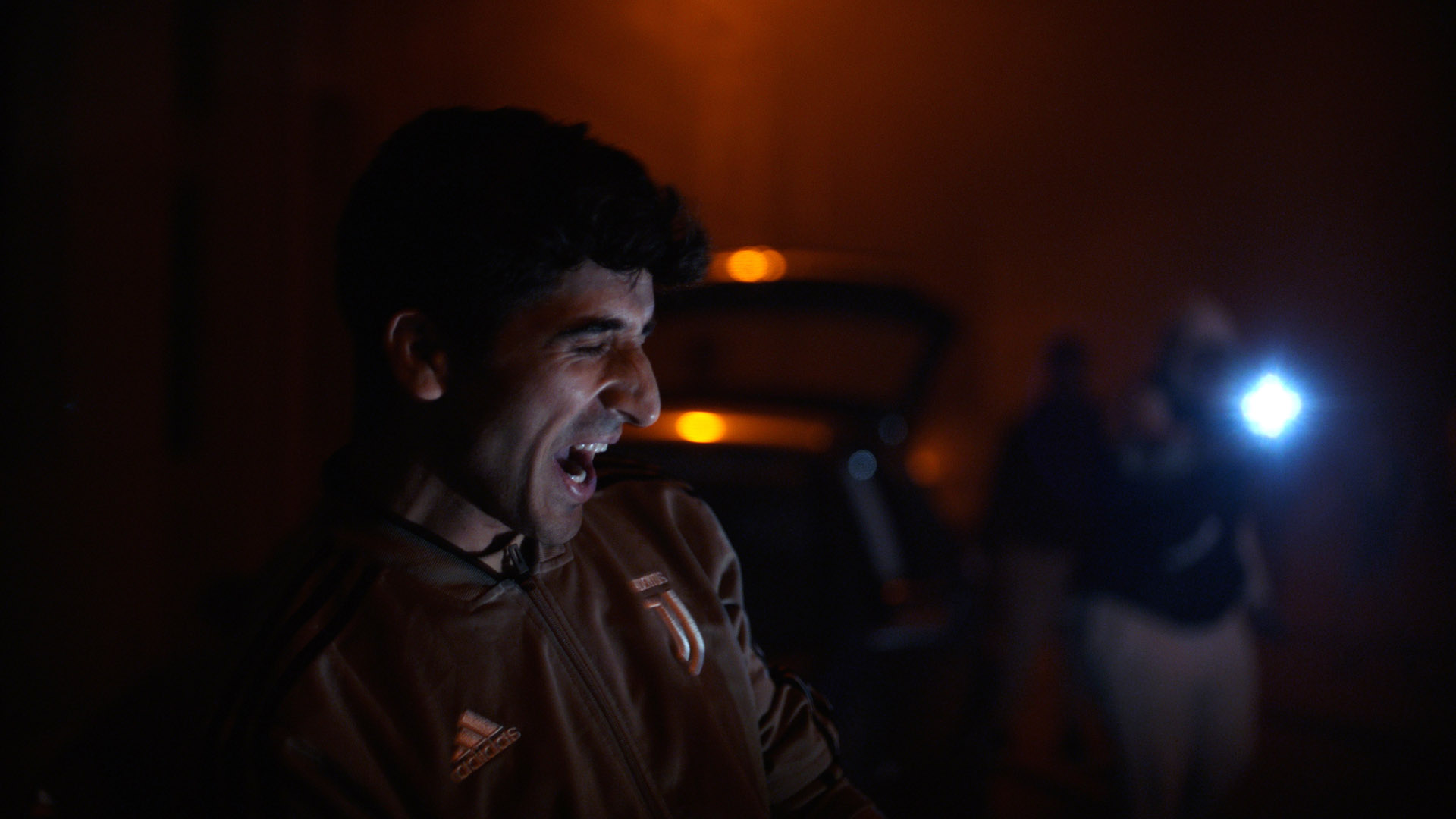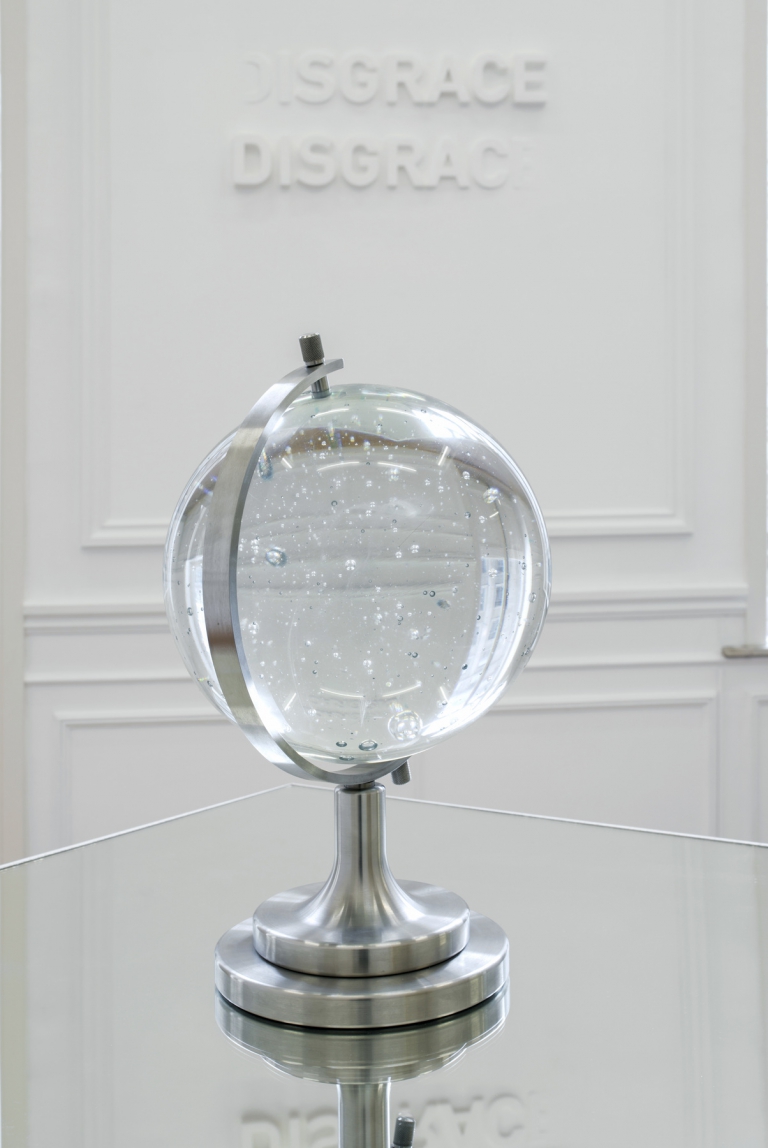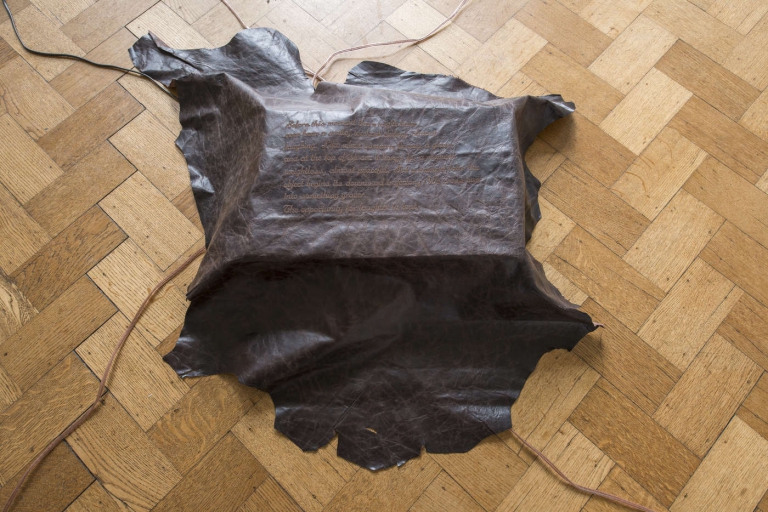Artist: Thomas Verstraeten
Exhibition title: Look out the Window. What you are seeing is called history
Venue: Fred & Ferry, Antwerp, Belgium
Date: May 26 – July 2, 2022
Photography: Tomas Uyttendaele / all images copyright and courtesy of the artist and Fred & Ferry, Antwerp
“What we need to question is bricks, concrete, glass, our table manners, our utensils, our tools, the way we spend our time, our rhythms. To question that which seems to have ceased forever to astonish us.”
In 1973, French author Georges Perec wrote the short essay “Approaches to what”. In this text, he argues for a radical attention to the everyday. According to him, the emphasis on the spectacular, the scandalous, the catastrophic lead to a kind of numbing habit – the train is only really seen when it derails, the plane when it is hijacked. Perec sees describing reality without exaggerating as the way to return to the essence. In the essay, he calls for a systematic and sensationless inventory of daily life, in order to understand it, to preserve it too. It is no coincidence that the text is Thomas Verstraeten‘s credo.
In his practice, Verstraeten makes the obvious visible again, the temporary tangible. At the interface between visual arts and theater, he develops performances, installations and videos that expose the human condition. His often large-scale projects, rooted in urban space, testify to his intrinsic fascination with the beautiful, messy ways in which people shape their lives. He reworks recognizable situations in a realistic, but at the same time subjective fashion. In 2016, for example, he built a night shop in deSingel. “All the formal, almost archetypal elements that make a night shop a night shop are present. Yet you wonder what is missing. The city? The street? The night?” The uncanny incompleteness follows from the transformation in time and space that takes place. Verstraeten continuously shifts contexts: from public to private, from micro to macro, from fact to fiction.
This is of course possible because he dramatizes reality. Each project is based on a clear dramaturgy; both a performance and an exhibition follow a carefully constructed script, in which selection and interpretation took place. Verstraeten acts as a director – or in his own words: a traffic controller. He accompanies reality within the grand framework of the staging, then sets her free. Sometimes something goes wrong, sometimes the magic of the here and now occurs.
Verstraeten embraces this unpredictability in his attempts to get as close as possible to the equally unruly human existence. It is also unavoidable, given his chosen material: his projects are not shaped by the performance of professional actors, but by the participation of ordinary people. They play no role, only themselves. Their true re-enactment of the everyday sharpens the perspective: as a spectator, you see a reality unfolding that you otherwise might have missed, because you might have been in the middle of it yourself. It is reminiscent of what David Foster Wallace wrote in a 2005 speech at Kenyon College: that everything you experience, by default, happens from the point of view of yourself as a center, but that you can learn to move that center to someone else. That by being attentive, you can undermine the automatisms in your way of looking.
Verstraeten’s studio is the city, the street, the shop in which he meets people. One of the first projects that resulted from this was “Pierre Menard’s Paradox” in 2014. For this installation, Verstraeten copied space and time: he recreated the interior of the Tangier coffee house in the buildings of Sint Lucas Antwerp and he orchestrated a performance of the real cafe regulars. Two worlds thus collided: the ‘white cube’ exhibition space and the Moroccan coffee house across the street. At the same time, the project created an astonishing paradox: Tangier was simultaneously there and here, twice exactly the same and completely different. The title of the work therefore refers to a short story by the Argentine writer Jorge Luis Borges, in which the fictitious author Pierre Menard writes two chapters from “Don Quixote” – neither rewrites nor copies, but immerses himself completely in the seventeenth century and as if he were Cervantes himself, starts writing from scratch. Although the text is the same word for word, the meaning is not.
In the exhibition at Fred&Ferry Gallery, Verstraeten shows the remains of this installation, together with a video of the performance and the accompanying script. He sees “Pierre Menard’s Paradox” as a study for “Familiestraat”, which he realized in September 2021. “Familiestraat” was a six-hour performance in which Verstraeten had residents of the Familiestraat in Antwerp (where he also lives) reenact thirty-five scenes from 2020 in a 1:1 scale cardboard copy of the street. During the first corona year, Verstraeten inventoried all the events in the Familiestraat in order to notice the remarkable in the apparently trivial situations and usual behaviors, to hear the poetry in the unobtrusive background noise. To arrive at a quintessential portrait of the va-et-vient in a single street.
In the exhibition, a new video work based on the performance is shown in pieces of the original cardboard installation. The film shows the true events of Verstraeten’s street unfolding over four seasons. These events are connected to what happens simultaneously on a global scale. For example, in the week before the murder of an innocent black man in the United States, a police intervention filmed by bystanders also took place in Familiestraat. A pandemic sweeps through streets worldwide that suddenly become playgrounds – also in Familiestraat there is tennis and scootering, football and fighting, and a game of hide-and-seek. And also in Familiestraat, fathers and sons keep a distance of one and a half meters, their longing floating between the doorway and the sidewalk. In Verstraeten’s “Familiestraat” micro and macro history come together in one image; the universal can be seen in the sometimes lively, sometimes silent Familiestraat.
Perhaps even more than in the performance, the cardboard construction is explicitly emphasized in the video and also in some of the photos on display. Verstraeten thus seems to suggest that “all the world’s a stage”, maybe with different scenes happening frontstage and backstage, but above all, always, a stage, an illusory play of pretend. Isn’t it?
“Describe your street. Describe another street. Compare.
Make an inventory of your pockets, of your bag. Ask yourself about the provenance, the use, what will become of each of the objects you take out.
Question your teaspoons.
What is there under your wallpaper?”
–Eline Verstegen






